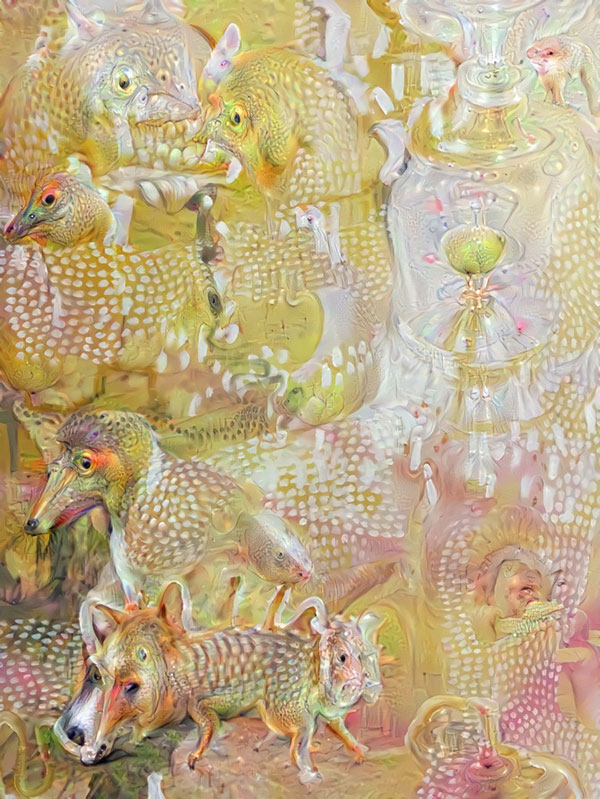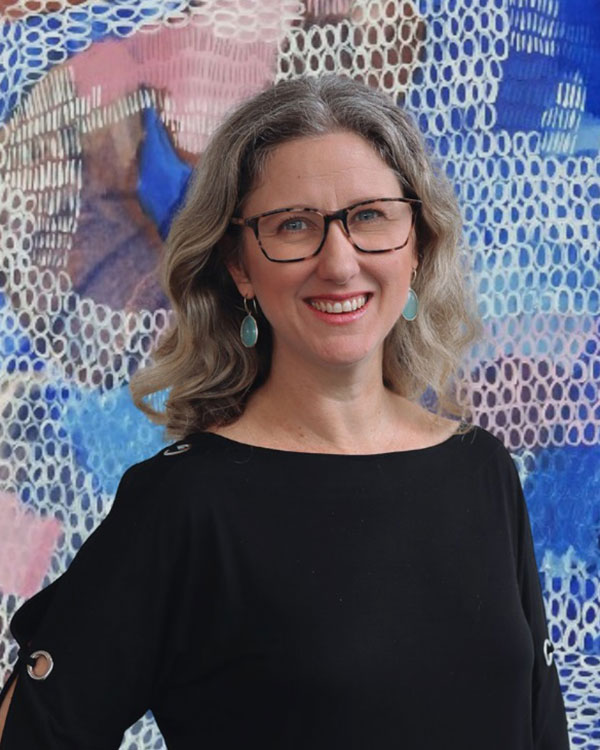
Kim Hellberg, 2 February, 2024 | Sarah's AI visualisation for a hotel foyer commission in the UAE
Discover the journey of QUT alumnus, Sarah Daly, seamlessly intertwining art and entrepreneurship. From art school to a QUT MBA, Sarah credits the program for imparting crucial skills. Her first encounter with the intersection of AI and art in 2018 marked a transformative phase, influencing her future artistic process. Balancing human creativity with AI-generated content, Sarah envisions a collaborative future in art creation. As a thought leader, she emphasises the crucial role artists play in discussions about AI's ethical and societal impacts.
Can you share a bit about your journey from being a student to your current work as an artist and establishing your own business?
I don’t think I would have understood how to be a commercial artist without doing my MBA. In art school, we were taught the technical skills, not how to have a career as an artist. The QUT Graduate School of Business had a culture and curriculum that encouraged entrepreneurship. The MBA helped me to think of my art as both a creative expression, and as a product to commercialise. In addition to my art business, last year I started a program that teaches artists how to commercialise their own art: www.creatr.art.
Was there a key moment in your career that solidified your interest in the intersection of AI and art?
Around 2018, I discovered a program called Deep Dream. Essentially, you could upload an image and it would reimagine it into a wonderfully surreal new image. It reminded me of how artists like Hieronymus Bosch and Salvador Dali interpreted the world through a different lens. I uploaded one of my paintings to see how it could interpret my work and loved the output. Weird, but very interesting. For me, a new creative conversation with a machine had begun.
 'The Research Landscape', one of Sarah's first explorations into AI-enabled art
'The Research Landscape', one of Sarah's first explorations into AI-enabled art
What role do you see AI playing in the future of art creation and expression?
Since I started collaborating with AI, our ability to trial generative AI has exploded. OpenAI’s ChatGPT and the DALL-E Series is a great example of insanely fast adoption.
We are starting to see the impact of AI on creative roles now, including conversations around how to think about art made with AI, how to copyright works created with AI, and the implications of data used in that creation. There is a lot of fear about AI taking creative jobs as we are seeing what it is capable of, and its capabilities are only improving. Back in the day, portrait painters were nervous about photographers too. Technology changes what is possible.
How do you navigate the balance between human creativity and AI-generated content in your artistic work?
For me, art is evidence of mind. AI is generating new discussions on what the ‘mind’ is. There are questions around whether AI is truly creative, and I believe it is, but we may have to define creativity in new ways now. I believe human-machine collaboration is the way forward. For example, a machine can’t assess beauty, balance, nor reflect the complexity of human emotions. Yet.
For a while there, around 2020, if you wanted AI to generate a portrait of a human, you were going to get something quite dystopic. It couldn’t ‘see’ human features well. Hands would have 7 fingers. Feet would be cut off. That would have been an advantage for an artist like Francis Bacon, but not for me. I stuck to creating abstract works because it helped me do that well. Now that the technology is improving, there is potential to do more with it in my art practice.
In what ways do you think AI can contribute to pushing the boundaries of traditional art forms and fostering innovation in the creative space?
Because AI has human-like capabilities, is interactive, can engage with people, and can learn, there is scope for art to become more of a conversation: there is potential for an artwork to evolve, rather than existing as a static piece - a marker of a point of time. In the same way there was a shift in the early 1900s in how we thought about representational art to abstract art, I think we are heading towards a huge shift in our perceptions around what art and creativity is, and AI is enabling that shift. It’s an exciting time.
What ethical considerations do you take into account when using AI in your art, and how do you approach responsible AI practices?
I use AI as part of my process, not to create a final product. I am the creator of my work, and the technology is a tool. I tend to use my own data or open-source data, because I am still working out my own ethics on how to reference outside data in my art. Copyright and intellectual property laws around AI art are becoming much clearer now, which is useful. It is an evolving conversation because we haven’t fully defined the roles of the human and the machine in the creative process, nor the implications.
 Sarah Daly, artist and QUT alumnus
Sarah Daly, artist and QUT alumnus
How do you feel the perception of AI in the arts has evolved over time, both within the artistic community (artists, buyers, collectors etc.) and among the general public?
AI art has been experimental, and slowly evolving for over 30 years. In 2018, the AI generated portrait “Edmond de Belamy, from La Famille de Belamy,” was sold for $432,500 at Christies. Buyers and collectors were taking AI art seriously. When AI art started to win art competitions, artists really started to pay attention. Many were not happy.
I’m looking forward to seeing how contemporary galleries like GOMA in Brisbane start to bring artists and technologists together to create AI enabled art experiences for the public. I think this will help the public understand AI art, and how AI can impact their lives more generally. The arts are a wonderful way to communicate controversial new ideas to a wider audience.
What challenges have you faced in introducing AI into the traditional art world, and how have you overcome them?
I tend to work with people who already understand technology. I create art for interior designers, architects, and property developers. I recently made a series of work for Aria Property Group that continued the narrative of the architecture (a building designed by of Koichi Takada and inspired by the form of a Moreton Bay fig) into the interior of the building.
Property developers understand my process because they use technology themselves to visualise and build what are essentially sculptures that people live in. The traditional art world is starting to see the relevance of AI in art too. Leading galleries like the Museum of Modern Art (MoMA) have already engaged AI artists and the art world will no doubt follow their lead.
As someone deeply involved in AI-enabled art practice, how do you envision the role of artists in contributing to discussions about the ethical and societal impacts of AI technologies?
Throughout history, artists have been social commentators. In each new societal era, the art continues the story of how we are thinking about the world. Artists often help us have the challenging conversations because the art provokes new perspectives. I look forward to more artists becoming involved in these conversations and helping us navigate the path forward.
Sarah Daly
QUT degrees - Master of Business Administration (2005), Graduate Certificate in Business (Management) (2003)
Sarah is currently a QUT PhD candidate working on her thesis: "Antecedents of trust in Artificial Intelligence and their relevance to the adoption of AI"
Do you have a question for Sarah? Connect with her on LinkedIn.
